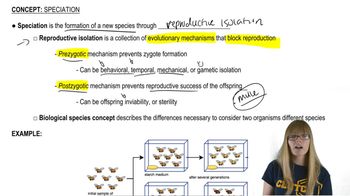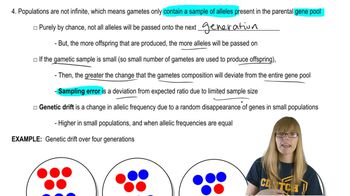Here are the essential concepts you must grasp in order to answer the question correctly.
Speciation and Species Concepts
Speciation is the evolutionary process by which populations evolve to become distinct species. Different species concepts, such as the Biological Species Concept, define species based on reproductive isolation, while others consider genetic, morphological, or ecological differences. Understanding these concepts helps determine when populations have diverged sufficiently to be considered separate species.
Recommended video:
Genetic Variation and Divergence
Genetic variation refers to differences in DNA sequences among individuals in a population. Over time, populations accumulate genetic differences through mutation, selection, drift, and gene flow reduction. Measuring genetic divergence using molecular markers helps assess how distinct populations are and whether they have evolved independently.
Recommended video:
Evolutionary Forces: Selection and Genetic Drift
Natural selection and genetic drift are key evolutionary forces that shape genetic variation within populations. Selection favors advantageous traits, while drift causes random changes, especially in small populations. These forces drive divergence by altering allele frequencies, contributing to reproductive isolation and eventual speciation.
Recommended video:
 Verified step by step guidance
Verified step by step guidance Verified video answer for a similar problem:
Verified video answer for a similar problem:

